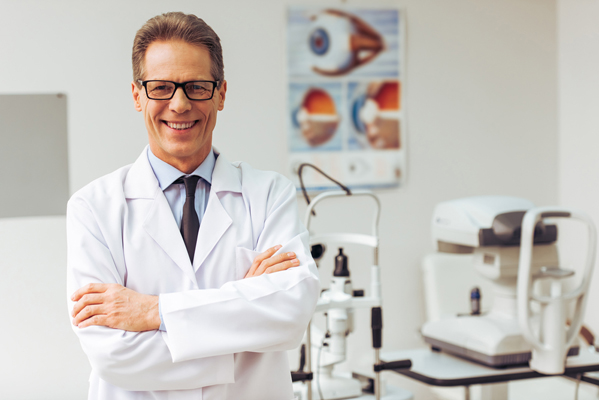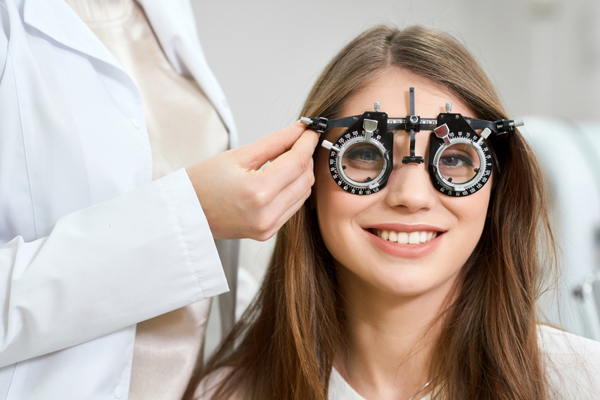What to Expect During a Diabetic Eye Exam

A diabetic eye exam is important for every person with diabetes. It is an eye exam providing complete details of the eye structures this chronic condition affects. Having an eye exam specific to your condition can establish a good treatment plan. Understanding what to expect during your upcoming diabetic eye exam can help you prepare better. Here are the details.
Visual acuity test
The eye care provider will check the patient’s visual acuity by using an eye chart. Diabetes causes retinopathy. It deteriorates the tiny blood vessels providing blood to the eyes. This can result in many changes in the patient’s eyes. It can affect the clarity of the patient’s vision. That is why a visual acuity test is essential in a diabetic eye exam.
A reduced eye acuity may lead to refraction. This test’s aim is to see if the patient’s eyeglasses prescription has changed. The eye check will give way to the testing of new lenses. The visual acuity test will result in new prescription glasses.
Pupil dilation
Dilating eye drops are often present in a diabetic eye exam. This helps enlarge the diabetic patient’s pupils for a short while. This removes the eye’s natural reaction to light. The pupil dilation allows the eye doctor to see into the back of the eye to check the fundus of the retina. It will allow the eye doctor to spot any retinal damage from diabetes.
Eye-dilating eye drops will start dilating the patient’s pupils after about 20 minutes. This will happen while waiting in the reception area. The dilation will last for two to three hours. Wearing dark sunglasses after the diabetic eye exam is practical. Doing so will protect the eyes from overexposure to light.
Someone will need to drive the patient home because of this. The eye care provider can offer disposable sunglasses after the diabetic eye exam. The patient could throw the glasses away upon reaching home. Most patients prefer to nap off the effects of the dilation drops.
Glaucoma test
Studies show that glaucoma is one of the main causes of blindness. Diabetic retinopathy increases a diabetic patient’s risk for developing glaucoma. This is the reason behind a glaucoma test during a diabetic eye exam. This test involves measuring the pressure inside the eyes.
Fundoscopy
This is an imaging test for the back of the eye. The eye doctor will check if the retina is healthy. Examining the fundus can happen with specific procedures or instruments. An indirect ophthalmoscope can give the eye doctor a wider view of the back of the eye or retina.
The eye doctor can also use a direct ophthalmoscope. This is a hand-held instrument with a bright light. It allows the eye care provider to see the back of the eye. A slit lamp ophthalmoscopy uses a slit lamp during the diabetic eye exam. This provides a close, 3D view of the optic nerve, retina, and retinal blood vessels.
A diabetic eye exam will help catch any eye and vision issues in diabetic patients
Diabetes is a chronic disease. It affects many of the body’s organ systems and basic senses. Having a diabetic eye exam can help you go through the different changes related to the disease. Seeing your eye care provider for regular eye checks can help improve your ocular health.
Get more information about Bright Eyes Optometry in Mt Vernon at https://brighteyesmv.com.
Check out what others are saying about our services on Yelp: Optometry in Mt Vernon, NY.
Recent Posts
Emergency eye care is needed if you find yourself dealing with a problem with your eye that causes pain or affects your vision. Failing to treat eye injuries as soon as they are detected can lead to permanent consequences, like reduced vision or blindness. Common eye injuries that require emergency eye care include: Exposure to…
Looking for more information on eye protection? An ophthalmologist knows everything there is to know about protecting the eyes. While there are a few different types of eye care professionals, ophthalmologists are eye care professionals who have undergone additional years of education and training so they can offer their patients both medical and surgical eye…
Controlling myopia at an early age can slow down its progression. This can help prevent yearly upgrades for stronger glasses. Your optometrist can help by offering various treatments. If you want to find out how your optometrist can help control myopia, here are the details.Optometrists use atropine eye drops to achieve short-term myopia control results.…
Another word for an itchy eye is ocular pruritis. It is a common health situation in many people. Itchiness in your eyes is more than enough reason to see an optometrist. Receiving prompt treatment is important in receiving prompt relief. If you want to know what causes an itchy eye and the treatments for it,…



